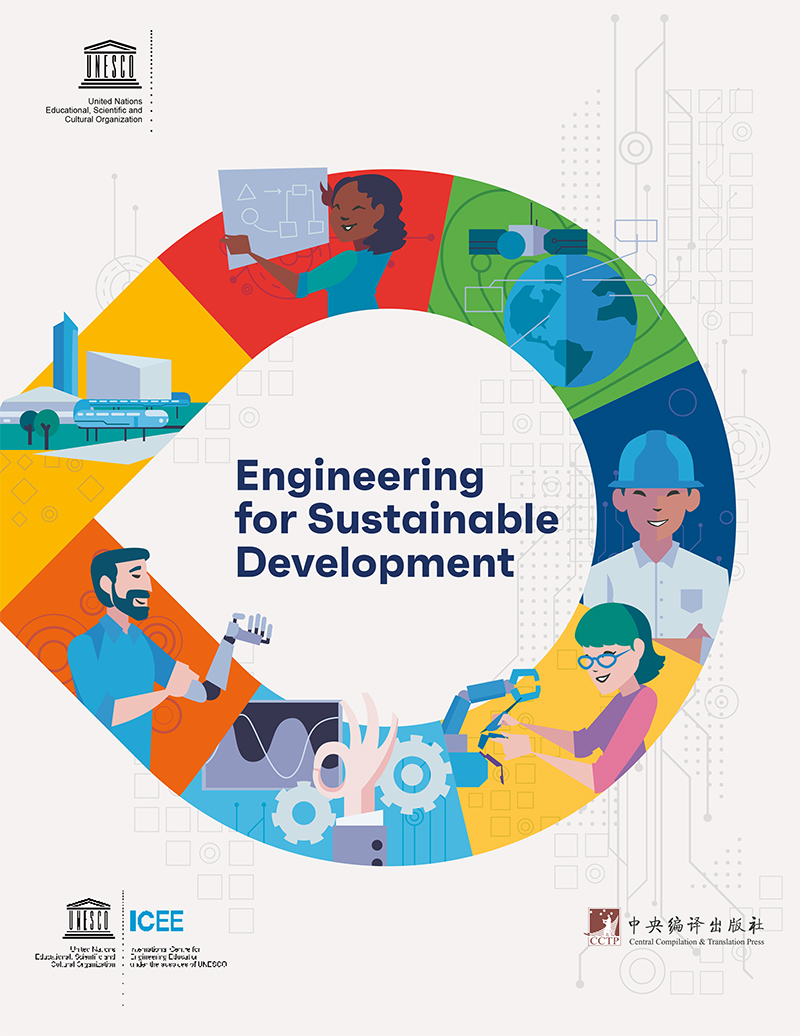Innovative engineering solutions will be vitally important in the next 10 years to help create a more resilient and equitable world, but to achieve this, more engineers are needed.
This is according to UNESCO’s second report on engineering, Engineering for Sustainable Development: Delivering on the Sustainable Development Goals (SDGs), released to mark World Engineering Day for Sustainable Development last week (8 March).
It follows UNESCO’s first report, Engineering: Issues, Challenges and Opportunities for Development, released in 2010, and sets out how the profession must evolve in order to help meet the goals.
These range from mitigating climate change and building resilient infrastructure, to ensuring food supply, providing clean and affordable water and energy, and conserving and restoring biodiversity.

“Engineering itself needs to transform to become more innovative, inclusive, cooperative and responsible,” according to the report.
A new paradigm for engineering is needed, one that bridges traditional divisions between disciplines and that is inter- and multidisciplinary in its approach, enabling engineering to tackle complex issues such as climate change.
Engineers Australia CEO Dr Bronwyn Evans said it was important to expand the range of views within the profession.
“We don’t just want solutions to our engineering problems, we want the best solutions,” she said.
“As well as tapping into a larger talent pool, a more diverse workforce enables the contributions of more perspectives and abilities that drive enhanced outcomes for society, as well as the organisations they work for.”
As UNESCO Director-General Audrey Azoulay put it, “engineering is one of the keys to the sustainable development of our societies, and to activate its full potential, the world needs more engineers and more equality.”
What has changed in the last decade
The report praised the power of engineering, and its broad range of disciplines, for having contributed to our ability to survive disasters and public health challenges, to secure food and water, to communicate and transport, and to innovate and create new products and services.
“Since the publication of the first engineering report, significant advances have been made in engineering worldwide and major contributions by engineers have moved towards sustainable development,” according to the report.
“At the same time, there are ever-pressing challenges that threaten the sustainability of humankind and the planet.”
Steps forward include:
- Improving food security with technology such as the Famine Early Warning Systems Network, a network of satellite and Earth-based monitoring and remote-sensing technologies that provide early warning and analysis
- Enhancing quality of life with medical devices for limbs and robotics, and using computer vision and artificial intelligence to continue to drive health advances
- Developing sensor and drone technologies to map populations of endangered animals and DNA sequencing to track animals from water samples in known habitats, for example, platypus in in Australia
- Facilitating increased delivery of education, including to women, through the creation of new technologies that rely on fast communication
- Developing new technologies such as advanced automation, telecommunications, robotics and 3D-printing for the world of work
- Implementing low-cost, accessible, solar technology in developing countries, especially in remote and rural areas
- Working with scientists to address the degradation of fisheries, ocean pollution and use of resources. In Australia The Reef 2050 Plan provides clear actions and outcomes for the sustainability of the Great Barrier Reef
- Developing methods to absorb carbon from the atmosphere, including ocean fertilisation (to increase the rate of photosynthesis in oceans)
Australian challenges
Locally, there is a huge opportunity to substantially address climate change, strengthen resilience to future shocks and ensure long-term, sustainable prosperity, according to the Transforming Australia SDG Progress Report 2020 Update by Monash University.
Professor of Sustainability Research in the University of New South Wales (UNSW) School of Civil and Environmental Engineering Tommy Wiedmann said humanity is at a vital juncture.
“We are at a critical point in time, where we have a chance to make a big difference on issues such as climate change,” he told create.
“The opportunity is there for engineers to assist in areas such as clean energy, circular economy, ecosystem restoration or soil management.”
Problems can be fixed at source before they happen, rather than offer a patch-up solution, said Professor Sami Kara, researcher and lecturer in UNSW’s School of Mechanical and Manufacturing Engineering.
“Engineering has done a lot to improve the eco efficiency of products and services we provide and you would expect that, sustainability wise, we would be better off,” he told create.
“Unfortunately, that is not the case.”
Kara said population growth, teamed with an increasing desire for affluence, had shifted Australia away from achieving the SDGs.
“Our challenge in the next 10 years is in engineering products and services with a lifecycle view to prevent problem shifting, and move away from a linear to a circular economic system,” he said.
This has the potential to provide societal needs now and into the future, while minimising the environmental impact to meet climate targets, Kara said.
“This requires not only engineering efforts but also societal efforts, as engineering and technology cannot do it alone,” he added.
